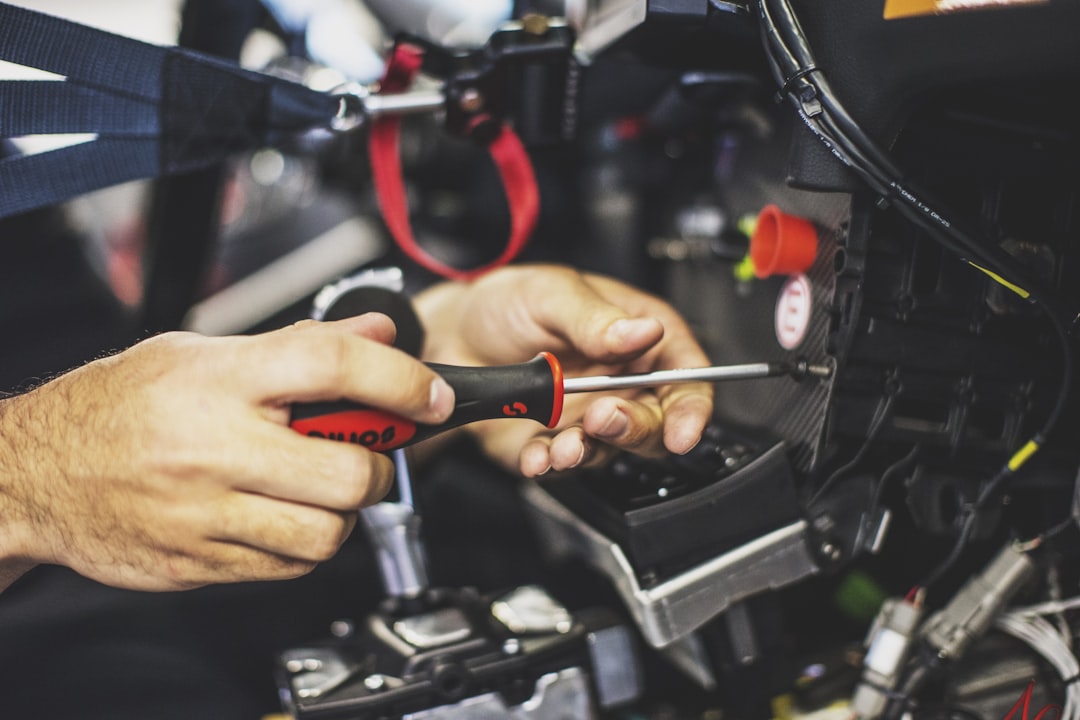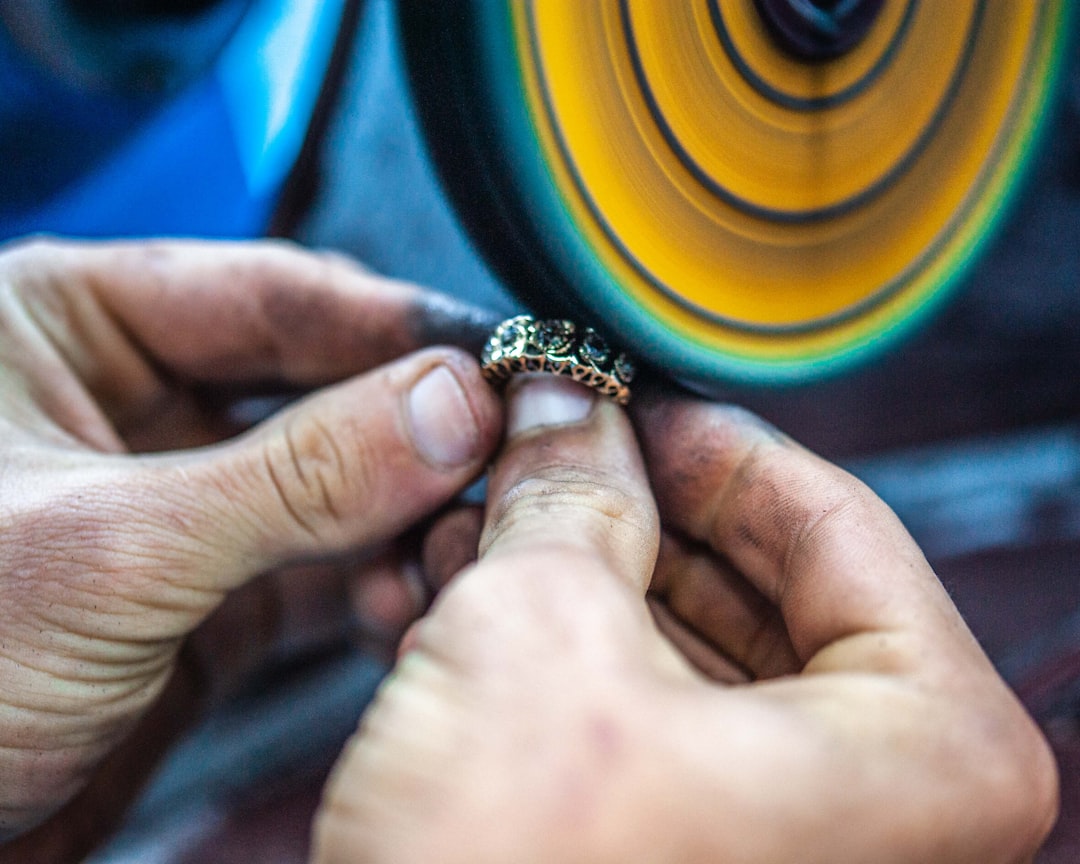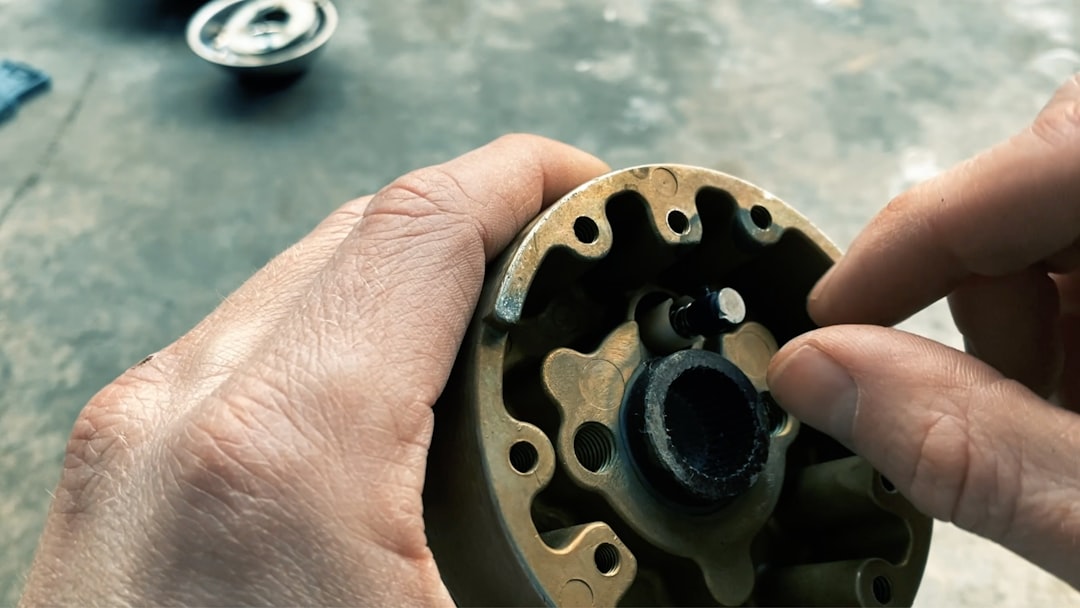

Engage prospects with a scan and streamline customer engagement with FREE QR code marketing tools by Sona – no strings attached!
Create a Free QR CodeFree consultation

No commitment

Engage prospects with a scan and streamline customer engagement with FREE QR code marketing tools by Sona – no strings attached!
Create a Free QR CodeFree consultation

No commitment
Auto repair equipment suppliers are navigating an era where the lines between offline and online experiences are rapidly blurring. As demand for automotive repair tools and garage equipment grows, so does the need for suppliers to stand out and deliver value with every customer interaction, whether in person at trade shows, through printed catalogues, or via direct communication in the shop. Relying solely on traditional sales materials and in-store conversations often leaves high-value opportunities untraced, especially when buyers are researching tools but not filling out contact forms, leading to missed connections and unrecognized demand.
One growing challenge is that suppliers frequently miss out on tracking high-value prospects who never leave their details, causing potential sales to disappear before even reaching the CRM. In today’s environment, the absence of visibility into these anonymous interactions means leads often remain unpursued. Rapid shifts in customer expectations toward seamless, immediate access to specifications, reviews, warranty, and support make efficient, measurable channels for engagement more vital than ever.
QR codes have quickly evolved from marketing curiosities to strategic tools capable of overcoming these industry obstacles. They enable suppliers to transform traditional touchpoints into gateways for real-time engagement and data-driven decision making. By exchanging manual catalog sign-ups and outdated print forms for digital experiences that automatically enrich account data, suppliers can accelerate lead capture, surface engagement signals earlier, and dynamically adjust sales follow-ups for increased efficiency and ongoing business growth.

QR codes act as high-impact connectors between your physical assets, such as equipment showrooms, vehicle service equipment displays, and print catalogs, and digital resources like product comparison pages, warranty registration, video demos, and auto repair equipment reviews. In a typical showroom or distributor network, buyers may spend 15 to 30 minutes engaging with lifts, balancers, or diagnostic platforms without ever logging an inquiry. This activity is a treasure trove of intent data that goes unrecorded unless you create direct, scannable paths to the next step.
Suppliers often struggle to turn in-person or print-based interest into qualified digital leads, especially when prospects browse but hesitate to reveal their details. QR-driven journeys simplify that handoff. When a technician or shop owner scans to view extended specs, watch a calibration tutorial, or compare pricing tiers, you capture both the moment of interest and the context. This reduces lag between initial attention and follow-up, and it also gives sales teams a clearer picture of readiness, product fit, and urgency.
By adopting these QR-driven workflows, auto repair equipment suppliers can replace guesswork with actionable data. Marketing can redeploy time from manual data entry to campaign optimization. Sales can prioritize accounts showing recent, specific interest in high-margin equipment. Support can preempt frustration by routing scanners to the right help, which boosts satisfaction while protecting revenue. Platforms like Sona QR make it simple to implement, scale, and measure these outcomes across your entire channel ecosystem.

The auto repair equipment sector faces unique hurdles: buyers often visit showrooms, browse catalog pages, or pick up a flyer at a demo, yet none of this interest is inherently traceable. Without a scannable action, crucial behavioral signals evaporate. Suppliers relying on outdated account profiles or handwritten notes risk missing the best time to follow up or the chance to provide personalized recommendations on capacity, compatibility, or financing.
QR codes solve for speed, context, and measurement. Instead of expecting prospects to remember a URL or call later, you meet them in the moment of curiosity with a direct path to action. That action might be a spec download for a two-post lift, a warranty registration on a tire changer, or a booking for an on-site demo of a remote diagnostics platform. Each scan becomes a data point that can trigger the right sequence, whether it is a sales call, an educational email, or a reminder for calibration services.

Different QR code formats align with distinct moments in the buyer or owner lifecycle. Selecting the right format and destination increases scan rates and ensures a scanner’s next step is seamless. For example, a shop manager evaluating lifts will want deep specs and comparison tools, while a technician on the floor needs a quick path to calibration instructions or service tickets. The right QR format makes those journeys effortless.
It is also important to distinguish static and dynamic codes. Static codes point to unchanging resources like a general catalog PDF or a safety poster. Dynamic codes provide editing flexibility and robust analytics. For fast-moving marketing campaigns or support content that evolves with product updates, dynamic should be the default.
With a platform like Sona QR, you can generate all of these formats, customize designs for brand consistency, and centralize performance reporting. This lets you manage codes across dozens of product lines and partners without losing visibility. Start creating QR codes for free.

Many suppliers still rely on static collateral and traditional outreach that does not capture high-intent interactions. The biggest growth opportunities sit at the intersections of curiosity and convenience: when a prospect is reading a spec placard, flipping through a catalog, or unboxing new equipment. If you pair these moments with QR codes that offer instant value, you transform passive interest into measurable signals.
Think beyond the sales floor. Post-purchase touchpoints, such as service reminders and consumables reordering, can drive recurring revenue and strengthen loyalty. QR codes give every document and device a role in revenue generation, support responsiveness, and customer education.
Prioritize placements that align with specific intent signals. For instance, scans from a lift safety checklist likely indicate an operations or compliance focus, while scans from a high-end diagnostic console card may indicate a shop that is ready to modernize. Let each placement become a micro-channel for insight and action.

Not all scans are created equal. The most valuable use cases are tightly aligned with common customer interactions and map cleanly to business outcomes. Focus on use cases that remove friction for buyers and give your teams the data they need to respond.
Start with the moments of maximum curiosity and urgency. When prospects are comparing capacity, compatibility, or total cost of ownership, make it easy to access the exact information that answers those questions. After the sale, anchor QR codes in touchpoints that make maintenance and support effortless. The result is stronger satisfaction, higher retention, and more predictable demand for parts and upgrades.
These use cases strengthen top-of-funnel engagement and align sales, service, and marketing with timely data that was previously inaccessible. They also teach your audience to expect helpful outcomes on every scan, which increases future engagement.
Each QR scan tells a story. The source, location, time, and destination combine to reveal what a buyer needs and how ready they are to act. When you deploy QR codes across product lines, media, and lifecycle stages, you can segment audiences automatically and retarget them with precision. This is especially potent for suppliers selling through distributors or dealer networks because it restores visibility into interactions that rarely get logged.
Build segments based on buyer type and context. An independent garage scanning a poster about financing may need different messaging than a dealership service center that scanned a calibration guide. Field technicians engaging with support QR codes might signal opportunities for training subscriptions or service bundles. The goal is to move from one-size-fits-all outreach to behavior-based follow-up that improves conversion and customer experience.
With Sona QR, each code becomes a smart entry point into your funnel. You can define segments, automate routes, and see which audiences are warming fastest so you allocate budget and time to the highest-yield opportunities.
When QR codes connect offline and digital, your entire go-to-market becomes more coherent. Instead of guessing which catalog pages, booth displays, or showroom kiosks are effective, you can see scan patterns, content consumption, and outcomes tied to revenue. This clarity helps teams coordinate messaging across channels and deliver consistent experiences wherever the buyer engages.
Integrations also make your owned channels and paid media smarter. For example, a scan from a tire balancer placard that leads to a financing page can automatically tag the account for a follow-up call, enroll them in a financing explainer email, and suppress unrelated product ads. The buyer gets a personalized journey, and your spend stays focused on what is working.
When you manage all of these touchpoints through a centralized platform like Sona QR, you can monitor performance, compare media, and sync scan data back into your CRM and ad platforms. This unifies the journey and empowers your team to act on insights while campaigns are live.
Launching a QR initiative does not require a massive overhaul. Success comes from a clear goal, the right format, thoughtful placement, consistent design, and disciplined measurement. The steps below are proven for auto repair equipment suppliers and can be rolled out across product lines, showrooms, and events.
Start by identifying a single, high-impact objective. Common goals include growing demo bookings for a vehicle diagnostics platform, capturing instant quotes for lifts and alignment machines, or increasing warranty registrations for newly delivered equipment. Tie the goal to a measurable business outcome, such as a percent lift in qualified demos, a reduction in response time, or a higher registration rate within 30 days of purchase.
Select a format that fits the objective. For simple evergreen content like a general catalog, static codes suffice. For any campaign that requires tracking, updates, or segmentation, use dynamic QR codes. Dynamic codes let you revise destinations without reprinting and provide logs for scans by device, time, and location.
Make codes visually aligned with your brand but prioritize scannability. Consider the physical environment: greasy hands, low light in service bays, and reflective surfaces can interfere with scanning. Use adequate size, contrast, and quiet zone. Include a short, benefit-oriented CTA within inches of the code so the value is obvious.
Distribute your codes where engagement naturally happens. Place them on equipment placards, end-cap displays, demo banners, catalogs, invoices, rental agreements, and support documents. Aim for a mix of pre-purchase and post-purchase placements so you can capture both new demand and ongoing service intent.
Measurement turns QR campaigns from a nice-to-have into a growth engine. Define success metrics before launch and inspect performance daily during the first two weeks. Watch scan volume, completion rates, and downstream actions like form fills, demo bookings, and quote requests. Use these insights to refine content, CTAs, and placements.
Without accurate attribution, suppliers cannot determine which offline investments drive sales or where high-value leads fall out of the funnel. QR analytics bridge this gap by connecting physical interactions to digital outcomes and revenue. The goal is not simply to count scans, but to understand what a scan leads to and how it fits into a multi-touch buying journey across showroom visits, site research, and sales conversations.
Comprehensive tracking reveals which equipment displays, brochures, or event placements spark meaningful action. It also uncovers timing patterns that impact staffing and outreach. For example, if scans peak in the early evening when shop managers complete paperwork, your follow-up sequence can be timed accordingly. Over time you will learn which content consistently moves buyers from curiosity to conversion and which placements are more effective as education rather than direct selling.
With Sona QR and Sona.com, teams get a dashboard view of scans by placement, media, and product line, real-time alerts for high-intent actions, and multi-touch attribution that ties QR engagement to pipeline. The result is a performance marketing loop that treats every physical surface as a measurable entry point to revenue.
QR codes work best when they are consistent, benefit-forward, and integrated into your operations. Build habits that encourage scanning and make every scan valuable. Over time, your audience will begin to expect a tangible payoff from each code, which increases participation and improves data quality.
Prioritize clarity and convenience for buyers. Use concise CTAs like Scan for 2-minute setup or Get instant quote. Place codes at eye level where possible, ensure they are not blocked by cables or accessories, and always test in the real environment. Then, let automation do the heavy lifting in the background so your team can focus on conversations rather than data entry.
The traditional separation between offline touchpoints and digital engagement is rapidly disappearing in the auto repair equipment space. Forward-thinking suppliers are using QR codes to capture vital buyer intent before it slips away, whether at the point of initial research, during service requests, or throughout ongoing support cycles. Every scan becomes a meaningful data point that fuels smarter targeting, more personalized follow-up, and more accurate attribution across all channels.
Auto repair equipment suppliers that embrace QR code-driven transformation are not just digitizing processes, they are building a smarter, data-rich go-to-market strategy. By illuminating previously hidden prospects, accelerating lead capture, and enabling immediate access to service resources, this approach strengthens relationships, increases operational agility, and ensures every buyer touchpoint becomes an opportunity for growth. With Sona QR handling creation and tracking, and Sona.com connecting scans to identity and revenue, suppliers can turn their offline moments into a measurable, orchestrated customer journey that compounds results over time.
QR codes have transformed the auto repair equipment suppliers industry by turning static product information and manuals into dynamic, instantly accessible resources. They enable suppliers to streamline equipment servicing, enhance customer support, and provide real-time updates—all while capturing valuable data on user interactions. Imagine your technicians and customers scanning a QR code to access troubleshooting guides, maintenance histories, or parts ordering instantly, reducing downtime and boosting satisfaction.
With Sona QR, creating dynamic, trackable QR codes is effortless. Update your equipment catalogs or service instructions on the fly without reprinting, monitor which resources are most accessed, and connect every scan directly to improved operational efficiency and customer retention. No more guesswork—just smarter engagement that drives growth.
Start for free with Sona QR today and transform every scan into faster service, stronger relationships, and measurable business success.
Top auto repair equipment suppliers are focusing on integrating offline and online experiences by using tools like QR codes to capture buyer intent, improve lead tracking, and enhance customer engagement across trade shows, catalogs, and service interactions.
Choose a supplier that provides seamless access to detailed product information, real-time support, and efficient lead capture methods such as QR code-enabled digital catalogs and demos, ensuring they offer measurable engagement and timely follow-up.
Essential equipment includes vehicle lifts, wheel balancers, diagnostic platforms, and calibration tools, all supported by resources like product specifications, maintenance guides, and service scheduling.
High-quality equipment can be sourced from suppliers who offer interactive online resources through QR codes on catalogs, in-store displays, and trade shows, allowing you to compare products, request quotes, and access financing options conveniently.
Maintenance and service can be managed by using QR codes placed on packaging, manuals, and equipment that link to calibration tutorials, service scheduling, parts ordering, and warranty registration to ensure timely support and upsell opportunities.
QR codes provide immediate digital access to product details, demos, support, and lead capture forms, enabling faster engagement, better data collection, and personalized follow-up that turns passive interest into actionable sales and service opportunities.
Dynamic QR codes allow suppliers to update destination content without reprinting, track detailed analytics like scan location and time, segment audiences for targeted follow-up, and optimize campaigns for better ROI.
Start by defining clear goals and target audiences, select appropriate QR code types (dynamic for tracking), design codes for easy scanning, deploy them across high-impact channels like showrooms and events, and continuously track and optimize performance using analytics.
Useful formats include web links for detailed product pages, forms for instant lead capture, vCards for saving contact details, app downloads for diagnostics tools, and Wi-Fi access codes for improved visitor connectivity at showrooms.
Suppliers can use QR code analytics to capture scan context such as location, device, and time, measure downstream actions like demo bookings and purchases, and integrate scan data with CRM systems to attribute revenue and optimize offline-to-online campaigns.
Use Sona QR's trackable codes to improve customer acquisition and engagement today.
Create Your FREE Trackable QR Code in SecondsJoin results-focused teams combining Sona Platform automation with advanced Google Ads strategies to scale lead generation

Connect your existing CRM

Free Account Enrichment

No setup fees
No commitment required

Free consultation

Get a custom Google Ads roadmap for your business






Launch campaigns that generate qualified leads in 30 days or less.
